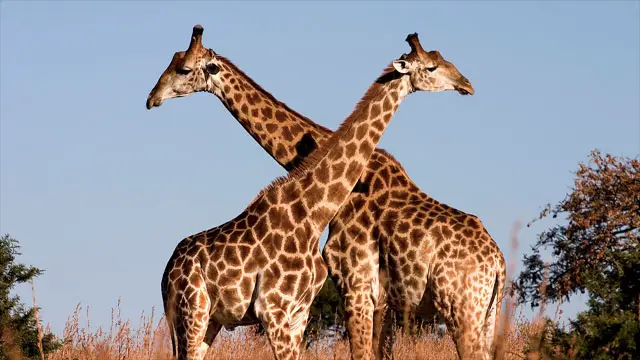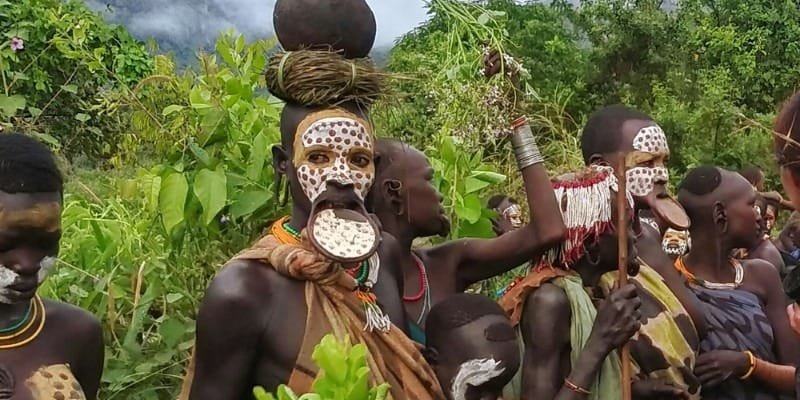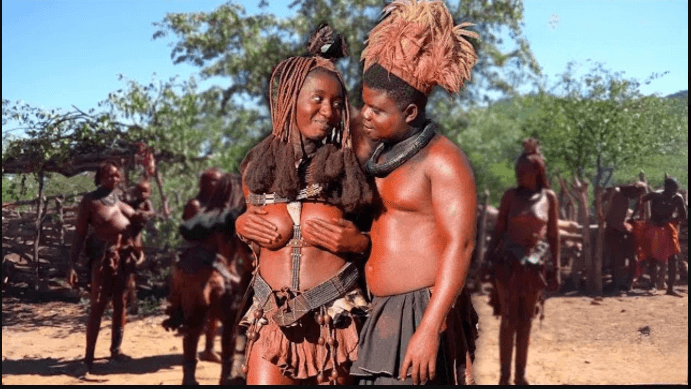Let’s explore some fascinating facts about African wildlife. Africa is a continent renowned for its rich natural heritage and diverse wildlife. From the majestic African elephant to the elusive African leopard, Africa’s wildlife has captured the imaginations of people around the world. In this article, we will delve into 20 fascinating facts about African wildlife, exploring their unique characteristics, ecological roles, cultural significance, and conservation challenges.
Join us on this journey to discover the wonders of African wildlife and the importance of conserving these precious resources for future generations.
Here are 25 interesting facts about African wildlife you probably didn’t know;
African “Big Five” Game Animals
- The African elephant, African lion, African leopard, African buffalo, and African rhinoceros are collectively known as the “Big Five” game animals of Africa.
- These iconic animals are highly sought-after by wildlife enthusiasts and safari-goers for their size, strength, and unique characteristics.
- They are found in various habitats across Africa and are crucial to the continent’s rich biodiversity.
African Elephant
- The African elephant is the largest land animal on Earth, with males weighing up to 14,000 pounds (6,350 kilograms) and standing up to 13 feet (4 meters) tall.
- They are known for their long trunks, large ears, and distinctively curved tusks made of ivory.
- African elephants are highly intelligent and social animals, living in close-knit family groups led by a matriarch.
African Leopard
- The African leopard is a solitary and elusive big cat known for its remarkable adaptability and excellent climbing skills.
- They are found in various habitats across Africa, including forests, grasslands, and deserts.
- African leopards have distinctive spotted coats and are known for their stealthy hunting techniques.
African Lion
- The African lion is the only species of big cat that lives in social groups called prides, typically consisting of multiple females, males, and cubs.
- Lions are known for their impressive manes in males, powerful roars, and remarkable hunting abilities.
- African lions are top predators and play a crucial role in maintaining the balance of ecosystems in Africa.
African Buffalo
- The African buffalo, also known as the African Cape buffalo, is one of the most dangerous animals in Africa.
- They are known for their massive size, strong herding instincts, and unpredictable nature.
- African buffalos are found in various habitats, including savannas, grasslands, and forests, and are known for their formidable horns and imposing appearance.
African Cheetah
- The African cheetah is the fastest land animal, capable of reaching speeds of up to 70 miles per hour (112 kilometers per hour) in just a few seconds.
- They have a slender build, spotted coat, and exceptional hunting skills, relying on speed and agility to catch their prey.
- African cheetahs are mainly found in open grasslands and savannas, and are known for their distinctive tear marks on their faces.
African Rhinoceros
- The African rhinoceros is one of the most endangered large mammals in the world, with populations declining due to poaching and habitat loss.
- There are two species of African rhinos, the black rhino and the white rhino, both of which are under threat.
- African rhinos are known for their thick skin, massive size, and distinctive horn on their snouts, which sadly makes them targets for poachers.
African Wild Dog
- The African wild dog, also known as the African painted dog or painted wolf, is a highly social and cooperative species known for its unique coat pattern.
- They live in close-knit packs and are known for their exceptional hunting skills, using teamwork and communication to catch their prey.
- African wild dogs are found in various habitats, including savannas, grasslands, and forests, and are endangered due to habitat loss and human encroachment.
African Giraffe
- The African giraffe is the tallest mammal on Earth, with some males reaching heights of up to 18 feet (5.5 meters).
- They have long necks, spotted coats, and distinctive ossicones (horn-like structures on their heads).
- African giraffes are herbivores, feeding on leaves from trees and shrubs, and are known for their unique browsing behavior.
- There are several subspecies of African giraffes, each with its own distinct coat pattern and distribution across Africa.
African Hippopotamus
- The African hippopotamus, often simply called a hippo, is a large semi-aquatic mammal known for its massive size and formidable teeth.
- Hippos are found in rivers, lakes, and swamps across Africa, and spend most of their time in the water.
- Despite their seemingly docile appearance, hippos are considered one of the most dangerous animals in Africa and are responsible for more human deaths than any other large mammal.
African Wildebeest
- The African wildebeest, also known as the gnu, is a large migratory herbivore that forms massive herds and undertakes one of the most iconic wildlife migrations in the world.
- They are known for their distinctive appearance, with a large, stocky build, shaggy mane, and curved horns.
- African wildebeests are found in grasslands and savannas across Africa and play a crucial role in the ecosystem as a prey species for many predators.
African Zebra
- The African zebra is a distinctive black-and-white striped herbivore that is found in various habitats across Africa, including savannas, grasslands, and woodlands.
- They are known for their unique striped coat patterns, with each zebra having a distinct pattern, similar to human fingerprints.
- African zebras are social animals, living in groups called harems, and are known for their speed and agility, often forming the first line of defense against predators.
African Warthog
- The African warthog is a wild pig species known for its distinctive appearance, with large curved tusks, a mane of stiff bristles, and warty protrusions on its face.
- They are found in savannas and grasslands across Africa, and are known for their excellent sense of smell and ability to dig burrows to escape from predators.
- African warthogs are herbivores, feeding on grass, roots, and other vegetation, and are known for their unique feeding behavior called “grazing on knees,” where they kneel on their front legs to feed.
African Nile Crocodile
- The African Nile crocodile is a large and powerful reptile known for its fearsome reputation and prehistoric appearance.
- They are found in rivers, lakes, and swamps across Africa, and are known for their ambush hunting techniques and ability to take down large prey.
- African Nile crocodiles have a unique relationship with the wildebeest migration, as they often wait in rivers for the wildebeest to cross, making for spectacular and dramatic interactions between the two species.
African Baobab Tree
- The African baobab tree, also known as the “Tree of Life,” is a massive and iconic tree species that is native to Africa.
- Baobabs have a distinctive appearance, with thick trunks and branches that resemble roots, and can live for thousands of years.
- African baobabs are culturally significant and play a crucial role in local ecosystems, providing food, water, and shelter to various animals, and are considered symbols of strength and longevity in African folklore.
African Elephant Shrew
- The African elephant shrew, also known as the sengi, is a small insectivorous mammal that is native to Africa.
- Despite its name, the elephant shrew is not closely related to elephants or shrews, but rather belongs to a unique family of mammals called Macroscelididae.
- African elephant shrews are known for their unique appearance, with a long snout, large ears, and slender body, and are known for their remarkable speed and agility.
- They are found in a variety of habitats across Africa, including forests, savannas, and deserts, and primarily feed on insects and other small invertebrates.
African Grey Parrot
- The African grey parrot is a highly intelligent and talkative bird species known for its exceptional mimicry skills and ability to learn complex tasks.
- They are found in the rainforests of West and Central Africa, and are known for their distinctive grey plumage, white mask-like face, and bright red tail.
- African grey parrots are highly sought after as pets, but they are also listed as endangered due to habitat loss and illegal trade, and are protected by international conservation efforts.
African Leopard
- The African leopard is a large and elusive big cat species that is found in various habitats across Africa, including forests, savannas, and mountains.
- Leopards are known for their spotted coat, stealthy hunting techniques, and ability to adapt to a wide range of habitats.
- African leopards are solitary and elusive animals, known for their ability to adapt to a wide range of habitats and their exceptional hunting skills, making them one of Africa’s most iconic predators.
African Wild Dog
- The African wild dog, also known as the painted hunting dog, is a highly social and endangered carnivorous mammal that is native to Africa.
- They are known for their unique coat pattern, with irregular patches of black, white, and tan, and their exceptional teamwork and hunting skills.
- African wild dogs are highly efficient hunters, often taking down prey much larger than themselves, and are considered one of Africa’s most endangered large carnivores due to habitat loss and human-wildlife conflict.
African Crowned Crane
- The African crowned crane is a large and striking bird species known for its distinctive appearance, with a crown of golden feathers on its head and a colorful plumage.
- They are found in wetlands and grasslands across Africa, and are known for their elaborate courtship displays, which involve dancing, bowing, and vocalizations.
- African crowned cranes are important cultural symbols in many African countries, and are also considered threatened due to habitat loss and hunting.
African Pangolin
- The African pangolin is a unique and highly threatened mammal known for its distinctive scales and unique feeding habits.
- They are found in various habitats across Africa, including forests, savannas, and deserts, and are known for their nocturnal and secretive behavior.
- African pangolins are highly valued for their scales, which are believed to have medicinal properties in some cultures, making them one of the most trafficked mammals in the world and facing the risk of extinction.
African Giant Land Snail
- The African giant land snail is a large and invasive snail species that is native to East Africa but has been introduced to other parts of the world.
- They are known for their large size, reaching up to 20 cm in length, and their voracious appetite for a wide variety of plants, posing a threat to local agricultural and natural ecosystems.
- African giant land snails are considered invasive species in many countries and are subject to strict regulations to prevent their spread and impact on local biodiversity.
African Bullfrog
- The African bullfrog, also known as the pixie frog, is a large and robust frog species that is found in various habitats across Africa, including savannas, grasslands, and wetlands.
- They are known for their impressive size, with males reaching up to 25 cm in length, and their distinctive appearance, with a stout body and a large mouth.
- African bullfrogs are opportunistic predators, feeding on a wide range of prey including insects, small mammals, and even other frogs.
- They are known for their unique reproductive behavior, with males guarding and defending large underground nests, where females lay their eggs.
- African bullfrogs are considered an important food source for local communities in some parts of Africa, but they are also threatened by habitat loss and pollution.
African Civet
- The African civet is a nocturnal and solitary mammal that is found in various habitats across Africa, including forests, savannas, and wetlands.
- They are known for their distinctive appearance, with a long body, short legs, and a unique coat pattern of black and white stripes and spots.
- African civets are opportunistic omnivores, feeding on a wide range of prey including insects, small mammals, fruits, and vegetation.
- They are also known for their ability to secrete a musky odor from their perineal gland, which is used for territorial marking and communication.
- African civets are listed as least concern by the IUCN, but some subspecies are facing threats from habitat loss and hunting.
African Fish Eagle
- The African fish eagle is a large and powerful bird of prey that is found near freshwater habitats across Africa, including rivers, lakes, and swamps.
- They are known for their distinctive appearance, with a dark brown body, white head, and a hooked beak, and their remarkable hunting skills, particularly for catching fish from the water surface.
- African fish eagles are known for their loud and distinctive call, which is often associated with African wilderness and savanna soundscapes.
- They are considered a symbol of power and majesty in African cultures and are also protected under various conservation efforts due to habitat loss and pollution.
African wildlife is diverse and fascinating, with numerous species that are unique to the continent. From the majestic African elephant to the elusive African leopard, and from the iconic African lion to the agile African cheetah, these animals are known for their remarkable adaptations, behaviors, and ecological roles.
In addition to its diverse wildlife and natural wonders, Africa is home to a rich cultural heritage, with over 3,000 distinct ethnic groups and a wide range of languages, traditions, and customs. From ancient civilizations like Egypt and Ethiopia to modern-day cultural expressions in music, dance, and art, Africa’s cultural diversity is a significant part of its identity.
Overall, Africa is a continent of remarkable diversity, with its unique wildlife, landscapes, and cultures making it one of the most fascinating and captivating places on Earth. Its rich biodiversity, natural wonders, and cultural heritage are cherished and protected by conservation efforts and local communities, making Africa a truly special and awe-inspiring part of our planet.














